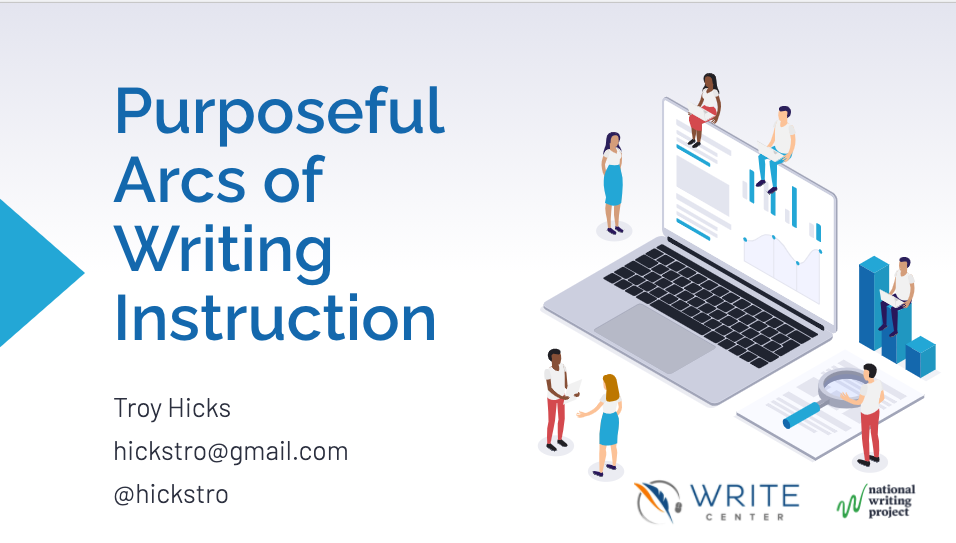By Jiali WangOn July 1st, 2020, Dr. Troy Hicks facilitated a webinar on purposeful arcs of writing instruction and what they look like in his classroom. This blog offers a recap of that two-hour event. For those interested in access to a replay of this webinar, click here. What are arcs of instruction?Arcs of instruction consider writing tasks in the context of larger unit or curricular movements towards writing proficiency. Hicks asks teacher to consider what types of writers they want to mold at the end of multi-day, writing-centric unit:
Planning in this way allows teachers to purposefully use blocks of time for synchronous and asynchronous instruction. For example, designing synchronous lessons focused on explicit strategy instruction to be followed by asynchronous composing by students. This would later be followed up with cycles of feedback, reflection, and continued practice. Below is an excerpt from the webinar that describes this practice. What are some examples of arcs of instruction?Here, Dr. Hicks has provided two examples of arcs of instruction in the links below: Argument in the Real World Template (as introduced to university freshmen in fall 2019, “force copy”) Argument in the Real World Template (as introduced to 6th graders in remote learning, “force copy”) The importance of responding to student writingDr. Hicks describes the importance of responding to student writing. Teachers can be flexible and responsive by balancing real-time conferencing and asynchronous responses to writing like comments on Google Doc: How to select digital tools?When selecting technology, always start with the learning goal in mind. To support instructors' purposeful arcs of writing instruction, Dr. Hicks covered a range of digital tools for remote teaching and learning. Moreover, Hicks suggested that instructors select tools based on their teaching and learning goals, keeping equity and student access at the forefront. Here, we have broken down specific goals Hicks addresses and accompanying tools educators may use: 1: Write for multiple purposes/ audiences 2: Connect writing and reading instruction 3: Write about material they are learning 4: Regulate the writing process 5: Teach sentence construction skills 6: Typing and voice dictation 7: Scaffolded and differentiated instruction 8: Help students become motivated writers 9: Assess writing and learning 10: Develop 21st-century writing 11: Establish a supportive environment A complete list of tools and resources have been curated by Dr. Hicks here. Protecting Student PrivacyEssential Question: How can we know whether tools can/will protect students' privacy? Dr. Hicks offered pro tips for teachers to check privacy settings before selecting digital teaching and learning tools. Interested in guest blogging for the National WRITE Center? See our guidelines here.
Comments are closed.
|
Archives
September 2023
Categories
All
|
WRITE Center: Writing Research to Improve Teaching and EvaluationThe research reported here was supported by the Institute of Education Sciences, U.S. Department of Education, through Grant R305C190007 to University of California, Irvine. The opinions expressed are those of the authors and do not represent views of the Institute or the U.S. Department of Education.
|
© COPYRIGHT 2019. ALL RIGHTS RESERVED.
|


